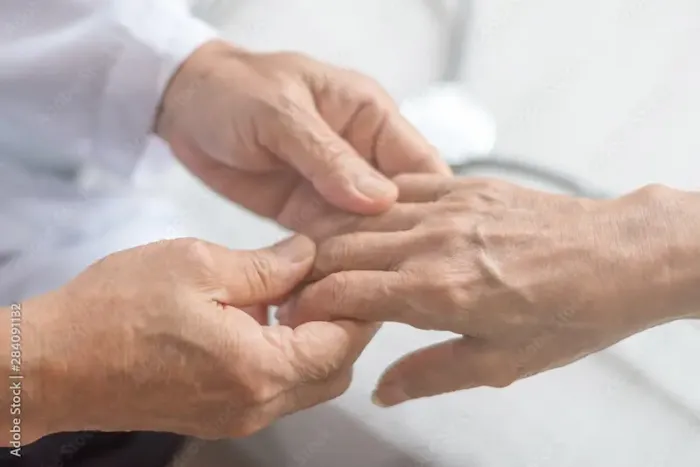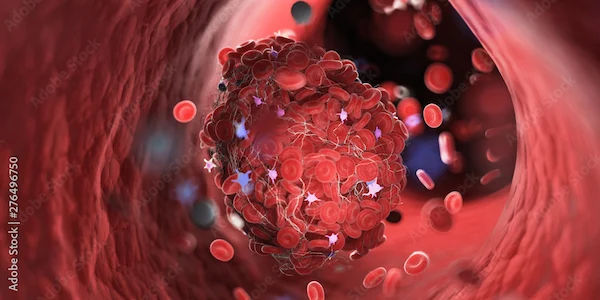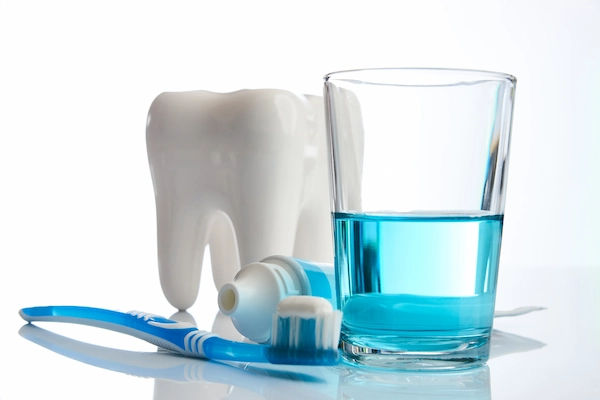Managing Parkinson's Disease A Guide to Modern Treatment Options
Explore the latest treatments for Parkinson's disease, from medications and surgery to supportive therapies and lifestyle strategies. Learn how to manage symptoms and improve quality of life.

Written by Dr. Mohammed Kamran
Reviewed by Dr. Rohinipriyanka Pondugula MBBS
Last updated on 4th Oct, 2025

Introduction
Receiving a diagnosis of Parkinson's disease can feel overwhelming, leading to one central question: Is there any treatment available? The answer is a resounding yes. While a cure for Parkinson's remains a key focus of ongoing research, a powerful and evolving arsenal of treatments exists today that can effectively manage symptoms, significantly improve quality of life, and allow individuals to live actively for many years.
This guide provides a comprehensive overview of the treatment options available for Parkinson's disease, from well-established medications and surgical procedures to essential lifestyle strategies and cutting-edge research. We will explore how these interventions work together to address the complex motor and non-motor symptoms of Parkinson's, empowering you or your loved one with knowledge and hope. Understanding that treatment is not one-size-fits-all, we'll emphasise the importance of a personalised care plan developed with a specialist.
Understanding Parkinson's Disease: More Than Just Tremors
Before diving into treatments, it's crucial to understand what we're treating. Parkinson's disease is a progressive neurodegenerative disorder, meaning it involves the gradual loss of nerve cells in the brain. It's often mistakenly reduced to a tremor, but its impact is far broader.
1. The Role of Dopamine in the Brain
The primary issue in Parkinson's is the depletion of dopamine-producing cells in a region of the brain called the substantia nigra. Dopamine is a crucial neurotransmitter that acts as a chemical messenger, facilitating smooth, coordinated muscle movement. When approximately 60–80% of these cells are lost, the characteristic motor symptoms of Parkinson's begin to appear. Therefore, most treatment for Parkinson's disease aims to replenish or mimic dopamine in the brain.
2. Common Symptoms Beyond Motor Issues
While tremors, stiffness (rigidity), slowness of movement (bradykinesia), and balance problems are the most visible signs, Parkinson's also involves numerous non-motor symptoms. These can include loss of smell, sleep disturbances, constipation, depression, anxiety, and cognitive changes. A comprehensive Parkinson's disease management plan must address this full spectrum to be truly effective.Consult Top Movement Disorder Specialists
The Foundation of Care: Medication Therapies
Medications are the cornerstone of managing Parkinson's symptoms. They work primarily by increasing dopamine levels or mimicking its effects in the brain.
1. Levodopa: The Gold Standard
Levodopa is the most effective and commonly prescribed medication. It is a natural chemical that the brain converts into dopamine. To prevent levodopa from being broken down in the bloodstream before it reaches the brain, it is almost always combined with another drug called Carbidopa. This combination remains the gold standard treatment for Parkinson's motor symptoms.
Managing Levodopa's Long-Term Effects
While highly effective, long-term use of levodopa can lead to fluctuations in its effect. Patients may experience "wearing-off" periods where the medication's benefit diminishes before the next dose, and involuntary movements called dyskinesias. Neurologists manage these challenges by adjusting the dose, frequency, or formulation of the medication or by adding other drugs.
2. Dopamine Agonists: Mimicking the Messenger
Unlike levodopa, dopamine agonists, like Pramipexole and Ropinirole, do not turn into dopamine. Instead, they mimic the action of dopamine by binding to dopamine receptors in the brain. They are often used in earlier stages, especially in younger patients, to delay the introduction of levodopa and its potential long-term side effects.
3. Other Key Medication Classes
A brief introduction to other important drug classes can help patients understand how their symptoms are managed:
• MAO B Inhibitors (e.g., Selegiline, Rasagiline): These drugs slow down the enzyme that breaks down dopamine in the brain, helping to extend the effect of levodopa.
• COMT Inhibitors (e.g., Entacapone): These extend the effect of levodopa by blocking another dopamine-metabolising enzyme, primarily used to reduce "off" time.
• Amantadine: Originally an antiviral drug, it can provide short-term relief of early symptoms and is also used to reduce dyskinesias in later stages.
Advanced Treatment: Surgical Interventions
For individuals whose symptoms are not adequately controlled with medication, surgery can be a highly effective option.
Deep Brain Stimulation (DBS): A Pacemaker for the Brain
DBS is the most common surgical procedure for Parkinson's. It involves implanting thin electrodes into specific areas of the brain that control movement. These electrodes are connected to a pulse generator (similar to a pacemaker) implanted in the chest. The generator sends electrical impulses to the brain, helping to block the abnormal nerve signals that cause Parkinson's symptoms. DBS is particularly effective for controlling motor fluctuations, tremors, and rigidity.
Is DBS Right for You? Candidacy and Considerations
DBS is not for everyone. Ideal candidates generally have Parkinson's that responds well to levodopa but suffers from significant "off" time or dyskinesias. They should be in good overall health without significant memory or thinking problems. A thorough evaluation by a multidisciplinary team is essential to determine if the deep brain stimulation success rate is likely to be high for a particular individual.
The Power of Supportive Therapies: A Multidisciplinary Approach
Medication and surgery are only part of the picture. Supportive therapies are vital for maintaining function and independence.
1. Physical Therapy for Mobility and Balance
A physical therapist can design an exercise programme to improve gait, flexibility, balance, and strength. This is critical for reducing the risk of falls, one of the most serious complications of Parkinson's. The best exercise for Parkinson's patients often includes activities like tai chi, boxing, and dance, which challenge balance and coordination.
2. Occupational Therapy for Daily Living
Occupational therapists help patients adapt their homes and develop strategies to perform daily activities like dressing, eating, and writing more easily, thereby preserving independence and quality of life.
3. Speech and Language Therapy
Parkinson's can soften the voice (hypophonia) and cause slurred speech. Speech-language pathologists use techniques like the Lee Silverman Voice Treatment (LSVT LOUD) to help patients speak more clearly and loudly.
The Role of Lifestyle in Managing Parkinson's Symptoms
A healthy lifestyle is a powerful adjunct to medical treatment.
1. Exercise as Medicine: Tailored Regimens
Regular exercise is non-negotiable. It has been shown to slow symptom progression, improve mood, and enhance cognitive function. A combination of aerobic exercise, strength training, and balance work is ideal.
2. Diet and Nutrition for Optimal Health
While no specific "Parkinson's diet" exists, a balanced diet rich in fruits, vegetables, and fibre can help manage constipation. Protein timing can also be important, as high-protein meals can sometimes interfere with the absorption of levodopa. A nutritionist can provide personalised advice.
Exploring the Horizon: Emerging and Experimental Treatments
Research into new treatments for Parkinson's disease is incredibly active. Areas of promise include:
• Focused Ultrasound: A non-invasive procedure that uses ultrasound waves to target and destroy small areas of brain tissue causing tremors.
• Gene Therapy: Aiming to deliver genes to the brain that could help produce dopamine or protect nerve cells.
• Stem Cell Therapy: Research is exploring whether transplanted stem cells can replace lost dopamine neurons.
These treatments are largely experimental and available only through clinical trials, but they represent the future of Parkinson's care.
Building Your Healthcare Team: The Key to Personalised Care
Managing Parkinson's effectively requires a team. Your core team should include a movement disorder specialist (a neurologist with extra training in Parkinson's). This team expands to include physical, occupational, and speech therapists, a mental health professional, and a primary care physician. Regular follow-ups are essential to adjust the treatment plan as the disease evolves. If your current treatment plan isn't providing adequate relief, consider getting a second opinion from a specialist on Apollo 24|7.
Conclusion: Living Well with Parkinson's is Possible
The journey with Parkinson's disease is undeniably challenging, but it is important to face it with knowledge and hope. The question is not whether treatment is available for Parkinson's disease, but which combination of the many available options is right for you. From established medications and advanced surgeries to vital supportive therapies and lifestyle adjustments, the tools to manage this condition are more robust than ever before.
The goal of modern treatment is not just to control symptoms but to empower individuals to live full, active, and engaged lives. By working closely with a dedicated healthcare team, staying informed about new developments, and adopting a proactive approach to your health, you can navigate the path of Parkinson's with resilience. Remember, managing this disease is a marathon, not a sprint, and with the right support and personalised Parkinson's disease management plan, you can continue to thrive.Consult Top Movement Disorder Specialists
Consult Top Movement Disorder Specialists

Dr. Anjan Das
Ayurveda Practitioner
8 Years • Ayurvedacharya ( B.A.M.S )
Dumdum
Vedhive Ayurveda Clinic, Dumdum

Dr. Dhanunjaya Rao Ginjupally
Neurosurgeon
11 Years • M.B.,B.S., M.S.(Gen. Surg), M.Ch.(Neurosurgery) IFAANS Fellow, Movement disorders and Functional Neurosurgery/Neuro-oncology. University of Kentucky college of Medicine, USA.
Hyderabad
Apollo Hospitals Jubilee Hills, Hyderabad
(75+ Patients)

Dr. Soumya Sharma
Parkinson's & Movement Disorder Physician
8 Years • Fellowship in Parkinson’s disease and Movement disorders (London, Ontario, Canada), MBBS, MD (Internal Medicine), DM (Neurology),
Hyderabad
Apollo Hospitals Jubilee Hills, Hyderabad
(50+ Patients)
Consult Top Movement Disorder Specialists

Dr. Anjan Das
Ayurveda Practitioner
8 Years • Ayurvedacharya ( B.A.M.S )
Dumdum
Vedhive Ayurveda Clinic, Dumdum

Dr. Dhanunjaya Rao Ginjupally
Neurosurgeon
11 Years • M.B.,B.S., M.S.(Gen. Surg), M.Ch.(Neurosurgery) IFAANS Fellow, Movement disorders and Functional Neurosurgery/Neuro-oncology. University of Kentucky college of Medicine, USA.
Hyderabad
Apollo Hospitals Jubilee Hills, Hyderabad
(75+ Patients)

Dr. Soumya Sharma
Parkinson's & Movement Disorder Physician
8 Years • Fellowship in Parkinson’s disease and Movement disorders (London, Ontario, Canada), MBBS, MD (Internal Medicine), DM (Neurology),
Hyderabad
Apollo Hospitals Jubilee Hills, Hyderabad
(50+ Patients)
More articles from General Medical Consultation
Frequently Asked Questions
Q1. What is the newest treatment for Parkinson's disease?
While not universally new, Deep Brain Stimulation (DBS) technology is constantly improving. Emerging treatments such as focused ultrasound for tremor control have gained approval in some regions. Research into disease-modifying drugs that could slow progression is also very active, though none are yet approved.
Q2. Can Parkinson's be cured if detected early?
Currently, there is no cure for Parkinson's disease, even when detected early. However, early diagnosis allows for the prompt initiation of treatments that can effectively manage symptoms and may potentially slow the progression of certain aspects of the disease, leading to a significantly better quality of life for many years.
Q3. What is the life expectancy for someone with Parkinson's?
Parkinson's disease itself is not considered a fatal illness. People with Parkinson's often have a normal or near-normal life expectancy. The key is proactive management of symptoms to maintain overall health and prevent complications, such as falls or pneumonia, which can be serious.
Q4. What foods should be avoided with Parkinson's?
There's no universal list, but some common considerations include managing high-protein meals if they interfere with levodopa absorption; your doctor may advise taking medication 30–60 minutes before meals. It's also wise to limit foods that worsen constipation, like processed foods, and to avoid excessive alcohol.
Q5. How do I know if I'm a candidate for Deep Brain Stimulation (DBS)?
The best candidates for DBS typically have Parkinson's that responds well to levodopa but who experience significant 'off' periods or dyskinesias that are poorly controlled by medication adjustments. They should not have significant cognitive decline or untreated psychiatric conditions. A formal evaluation by a movement disorder specialist is required.




